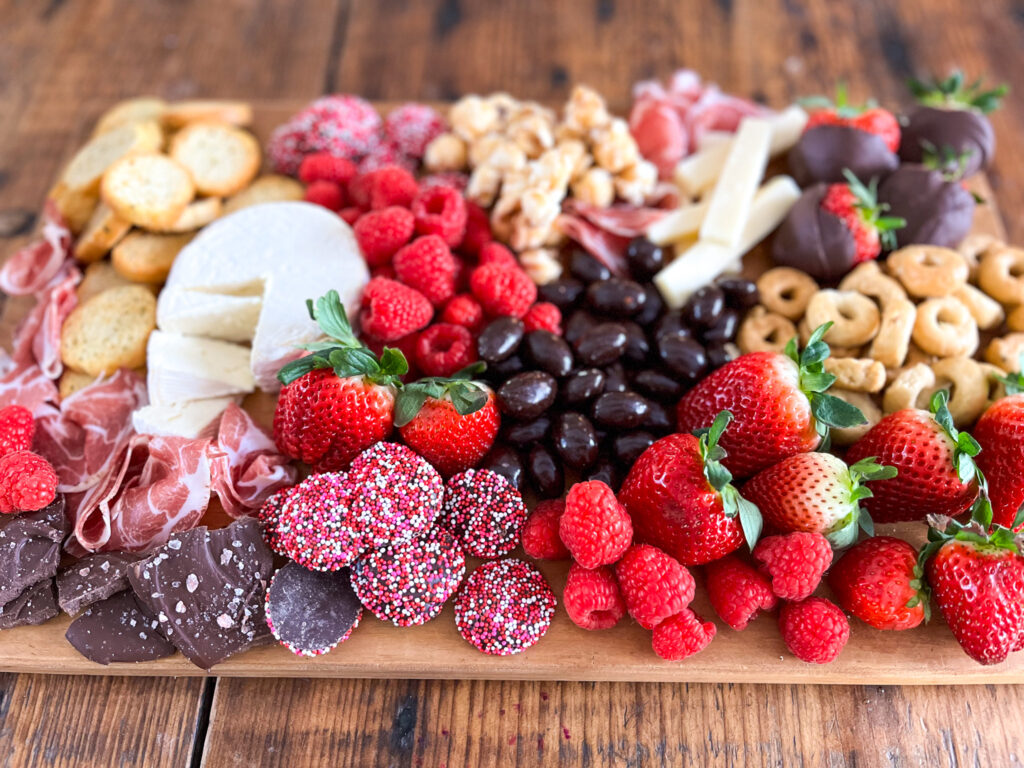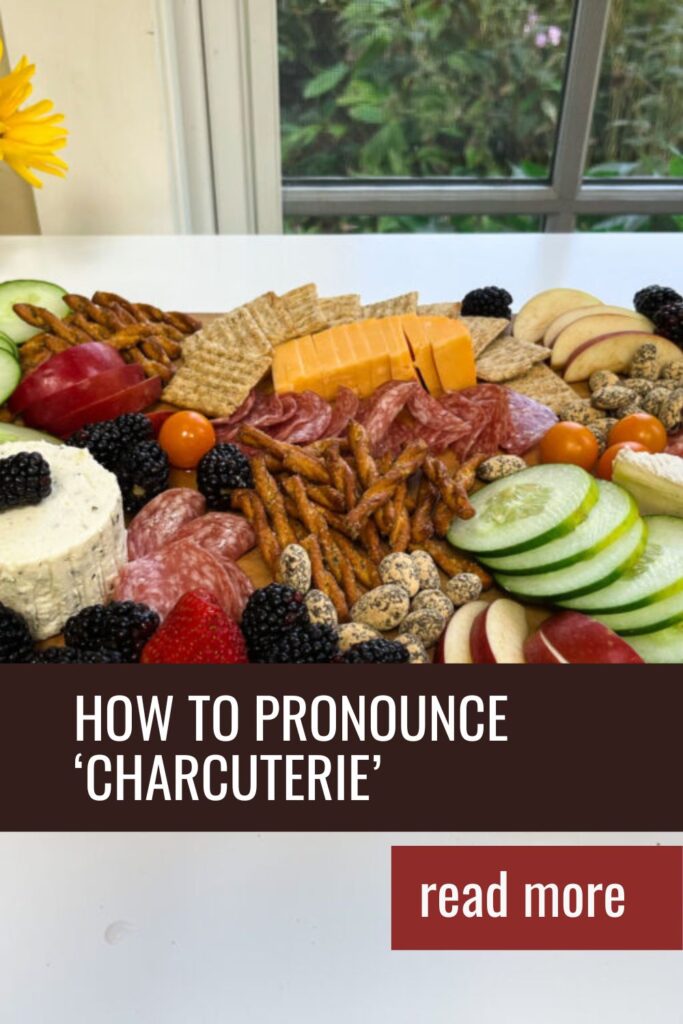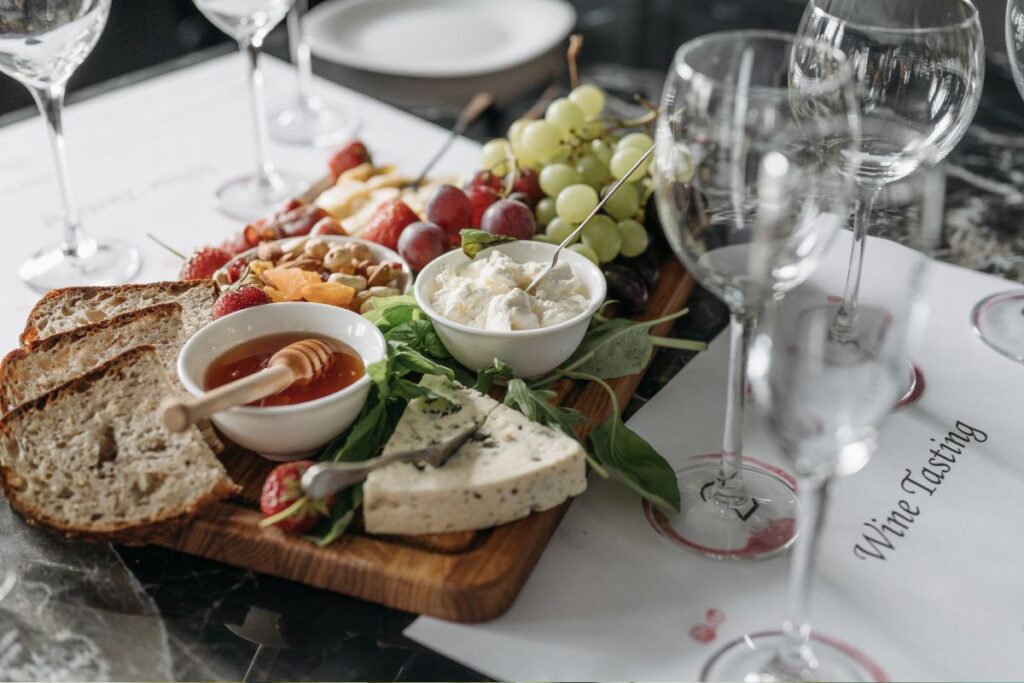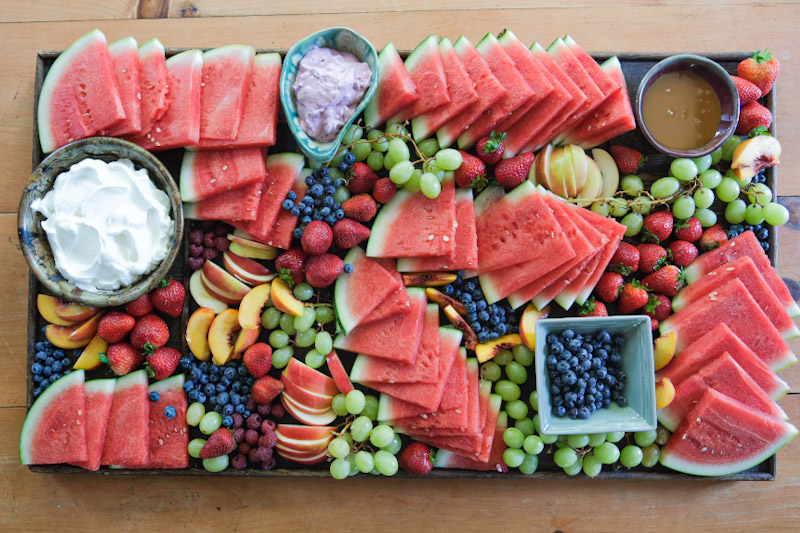Everywhere you look, people are making fun and modern charcuterie boards. But how exactly do you pronounce charcuterie?
In this quick and to the point post we’ll describe how to pronounce charcuterie. You may be familiar with how to make a board, (and we all enjoying eating them!). But pronouncing the word charcuterie isn’t as easy and we’ve heard it pronounced so many different ways. Below we share the correct way to pronounce charcuterie and a few addition fun facts.
Contents
How to Pronounce Charcuterie

Charcuterie (in English) is pronounced “shahr-koo-tuh-ree”. If you want to listen to how it’s properly pronounced, Google has an audio clip here.
Pronouncing the word charcuterie correctly involves a touch of elegance and a nod to its French origins. It’s not just a simple word; it carries a rich history and culinary tradition.
The proper pronunciation is “shahr-koo-tuh-ree.” Each syllable contributes to its melodious flow. Let’s break it down.
Start with “shahr,” pronounced like “shar,” with a subtle rolling of the tongue.
Then, transition smoothly into “koo-tuh-ree,” where the emphasis lies on “shahr.”
The “koo” glides softly into “tuh,” and finally, “ree” gracefully trails off.
Remember, it’s more than just a word; it’s an art form. So, when you utter “charcuterie,” let it resonate the way it deserves.
If you are pronouncing it more traditionally French, the French pronounce it slightly differently; sha’kuew-T’REE.
Why you NEED to Say Charcuterie Correctly
Mastering the pronunciation of charcuterie isn’t just about saying a word correctly; it’s about honoring the culinary traditions and cultural heritage of France. While the term has found its way into English, its origins remain deeply rooted in French cuisine.
By pronouncing charcuterie accurately, we pay homage to its French roots and maintain the authenticity of this culinary art form. It’s a gesture of respect toward a significant aspect of French heritage that has been embraced by English speakers worldwide. And the french are a bit picky about prnounciation, so it’s best to get it right!
Finally, clear and precise pronunciation fosters effective communication between chefs and patrons, ensuring an understanding and appreciation for the board being presented. Embracing the proper pronunciation of charcuterie not only preserves its cultural significance but also enhances the culinary experience for all involved – especially if they’re French!

Tips on Pronouncing Charcuterie
- Practice Aloud: Repeat “shar-koo-tuh-ree” several times, focusing on each syllable’s pronunciation.
- Listen to Native Speakers: Explore audio recordings of native French speakers pronouncing “charcuterie” to grasp the authentic pronunciation.
- Self-Recording: Record yourself saying “charcuterie” and compare it with the native pronunciation to identify areas for improvement.
- Repetition: Continuously practice saying the word until you feel confident in your pronunciation.
- Native Speaker Feedback: If possible, seek feedback from a native French speaker to assess your pronunciation accuracy and receive further guidance. Their insights can be invaluable in refining your pronunciation skills.
How to Say Charcuterie in Other Languages
While this post describe the English pronounciation of the word charcuterie, there are slight variations in other countries.
- Quebec French: Shar-koot-ray
- Belgian French: Charcuterie
- Spanish: Charcutería
- Swiss French: Shar-kooht’ruh-ree
- Swedish: Charkuteri
- Italian: Charcuteries
- German: Schar-ku-teh-rih
- Swiss German: Scharchüeterei
- Dutch: Charcuterieën
- Portuguese: Charcutaria
How to Pronounce other Charcuterie Words
Charcuterie isn’t the only word that is challenging to pronounce when you are building a board. Below are some other common charcuterie board and how to pronounce them:
- Prosciutto:
- Pronunciation: proh-SHOO-toh
- Definition: A type of dry-cured Italian ham, typically thinly sliced and served uncooked. It has a delicate flavor and often melts in the mouth.
- Salami:
- Pronunciation: suh-LAH-mee
- Definition: A type of cured sausage made from fermented and air-dried meat, often pork, mixed with various spices. It is typically served sliced thinly and eaten cold.
- Pâté:
- Pronunciation: pah-TAY
- Definition: A smooth paste made from finely ground or pureed meat, poultry, seafood, or vegetables, often mixed with herbs, spices, and sometimes alcohol. Pâté is typically served chilled and spread on bread or crackers.
- Chorizo:
- Pronunciation: chuh-REE-zoh
- Definition: A spicy pork sausage originating from Spain and Portugal, seasoned with paprika and other spices. It can be either fresh or cured and is often used in cooking or served sliced as part of a charcuterie board.
- Boucherie:
- Pronunciation: boo-shuh-REE
- Definition: A French term referring to a butcher shop or a place where meat is prepared and sold. It may also refer to the craft or trade of butchery.








